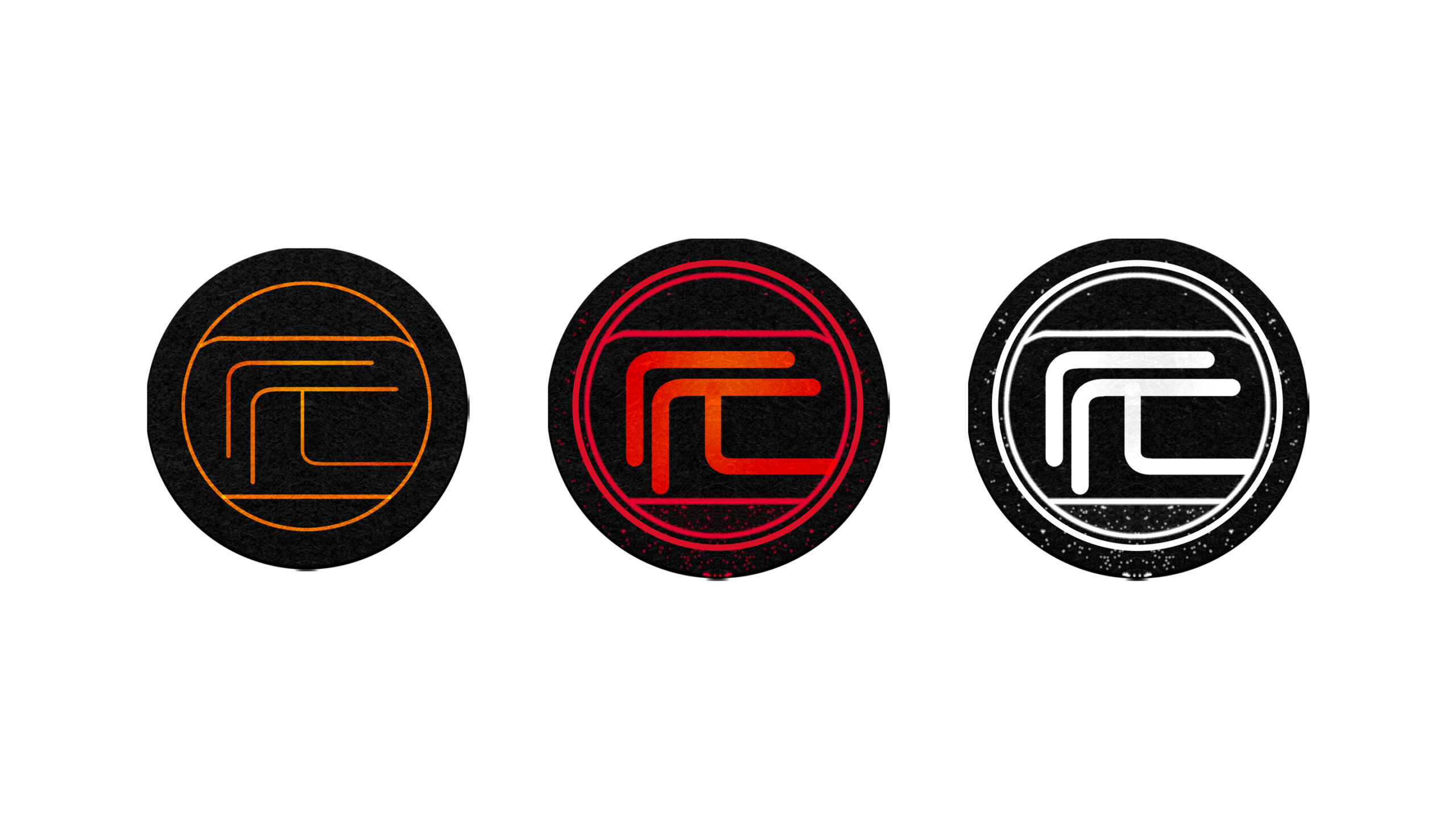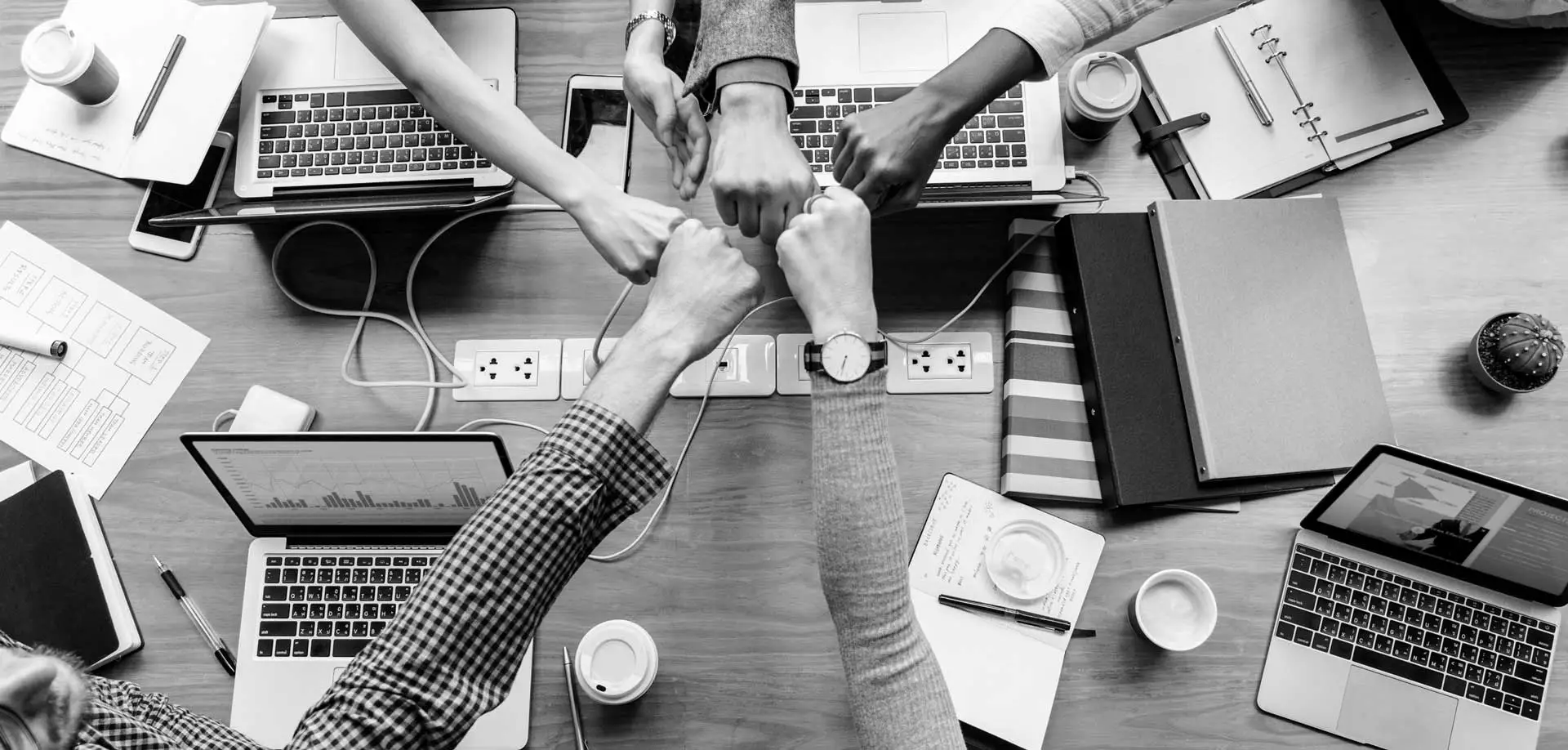1. Researching the algorithms for generating city layout
In the technical part, we mainly researched the generation algorithms related to the city layout in the second week.
The layout of cities varies throughout the time. For example, the people in Tang dynasty designed their city with grids and squares. On the contrary, modern cities appear to have more curve lines in their streets. One of our goals is to create multiple algorithms that can generate city layouts with different needs.
In the course of our research, we referred to several representative methods implemented in Houdini and Unreal Engine, which provided us with a lot of inspiration.
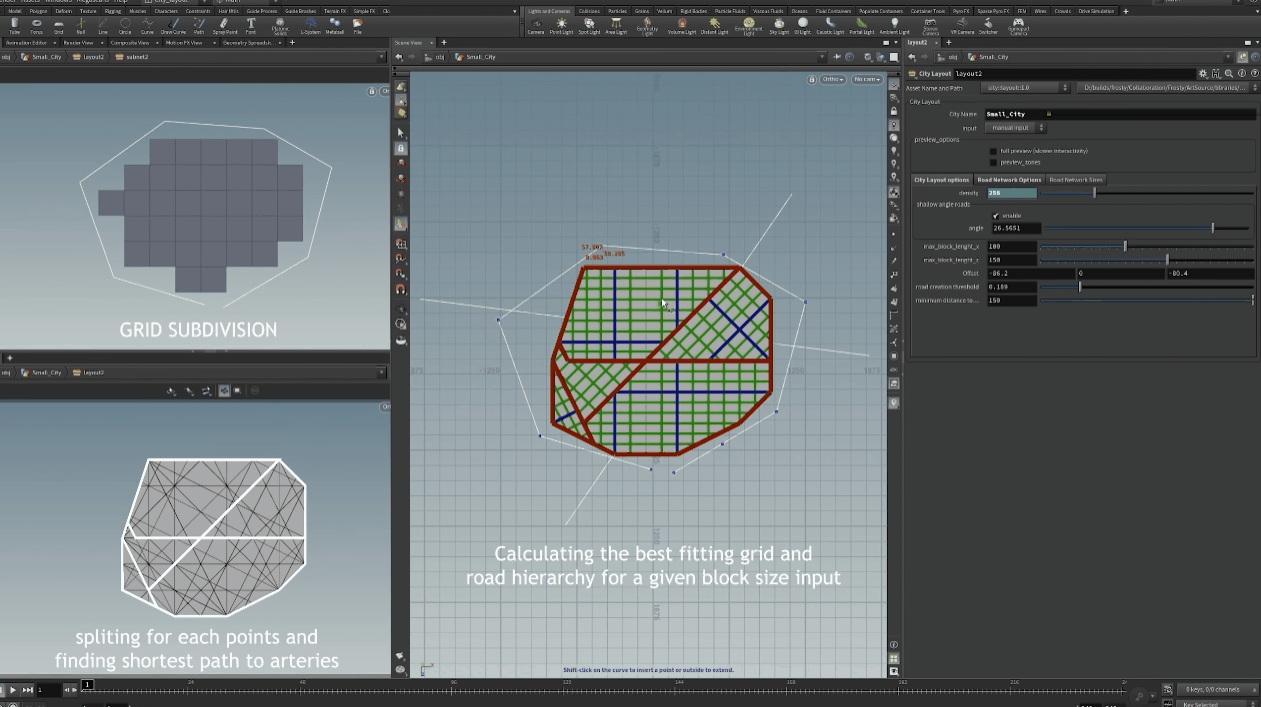
The Matrix Awakens
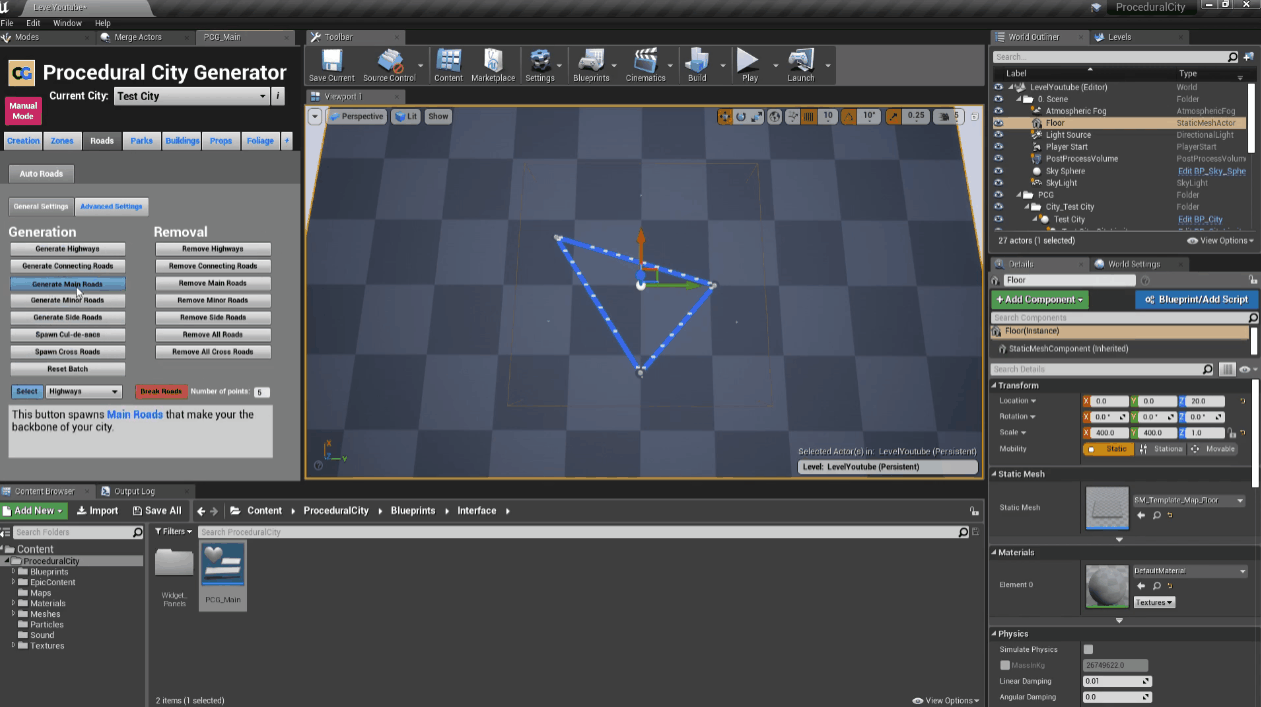
Procedural City Generator
Following this, we tried utilizing Houdini to build a 2D subdivision tool that can be used to generate basic layout with customized parameters. As one of the most frequently used techniques for procedural layout generation, Grid + Subdivision was the first direction we tried, and we will do more with it next week.

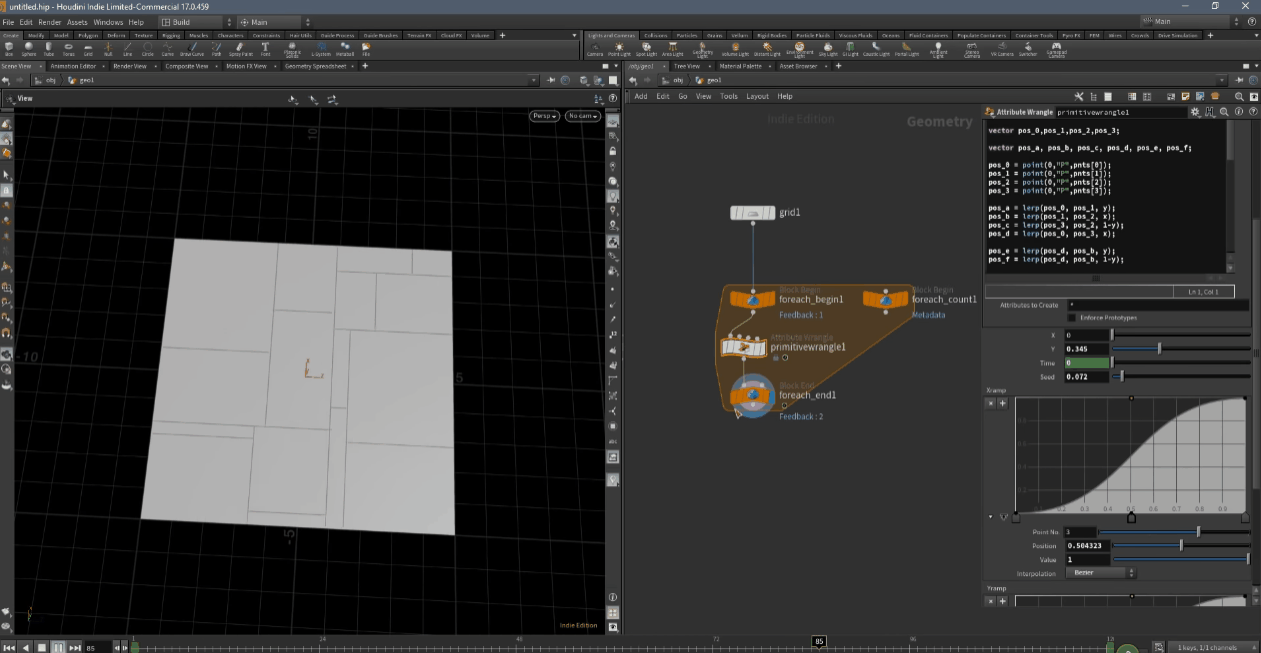
2. Tools Development in Unreal Engine using Blueprint
As one of the links of the entire city layout generation, we also explored the generation methods of the block boundary such as the walls. The following preliminary development was implemented in Unreal Engine 5 using widget blueprints.
With a single guide line (path), the developers can control the direction, length, angle, and other parameters of the boundary (wall) very freely and conveniently, and generate repetitive units. The specific object forms that make up the wall can also be customized and replaced with various types of art assets as well as some material properties.
3. Made some model preforms in Maya for later procedural generation
We made some model preforms in Maya to test the feasibility of separate modules. In the process of generating single buildings using Houdini, we might consider prefabricating a small number of modules on the exterior, which are usually unique and less reusable.
However, the current experiments may not be that accurate, and we will gradually revise them as development progresses.
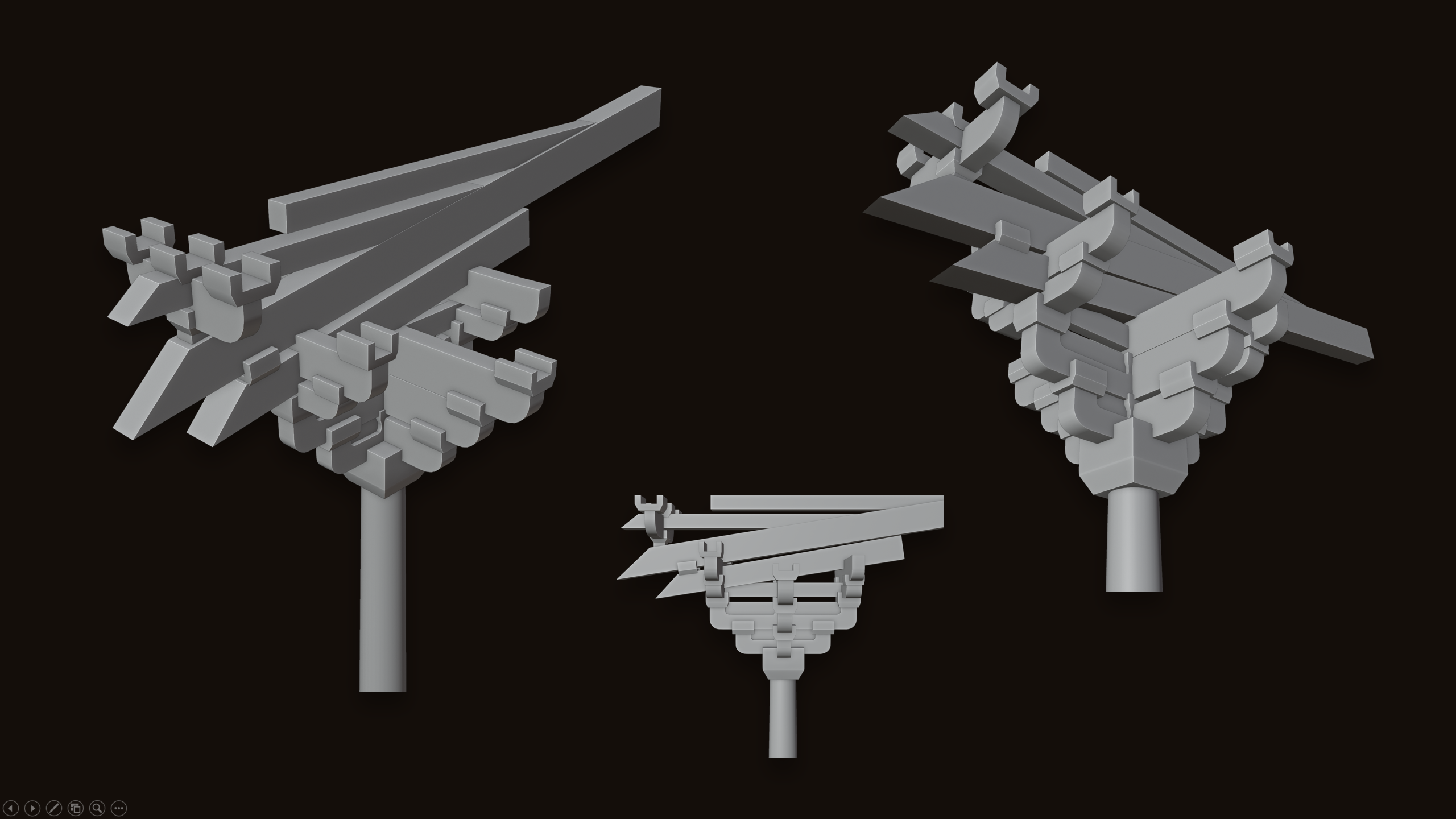
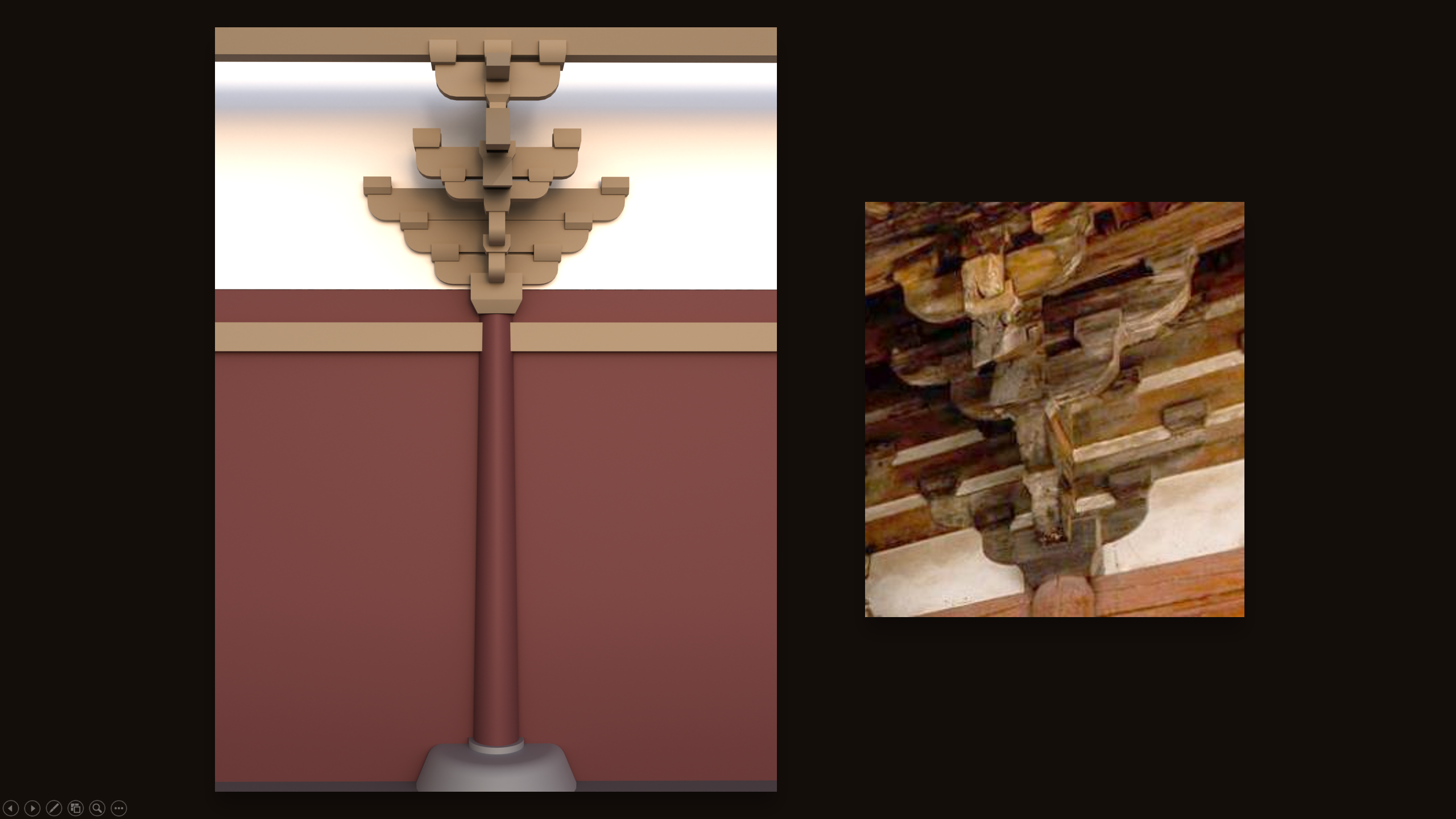
4. Roof Prototypes in Houdini
At the same time, we started prototyping some roofs in Houdini. First of all, the basic shaping, curvature and size are parameterized, and the users can adjust the number of roof surface and other custom parameters as well.
This is a preliminary start, and more work is on the way.
5. Completed the design and production of the Team Logo
The first design is in the style of a seal. The shaping inspiration comes from the structure of the apex of Tang Dynasty historical architecture: Chiwen (鸱吻 or 鸱尾) (https://en.wikipedia.org/wiki/Chiwen) (https://www.chinaeducationaltours.com/guide/culture-architecture-chiwen.htm) Its appearance is beautiful and elegant, and the legendary creatures and the highest point also symbolize the meaning of good and auspicious.
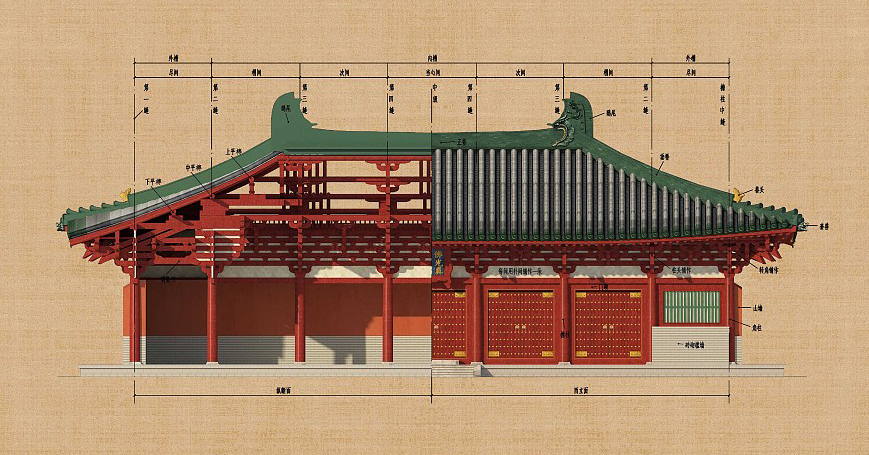
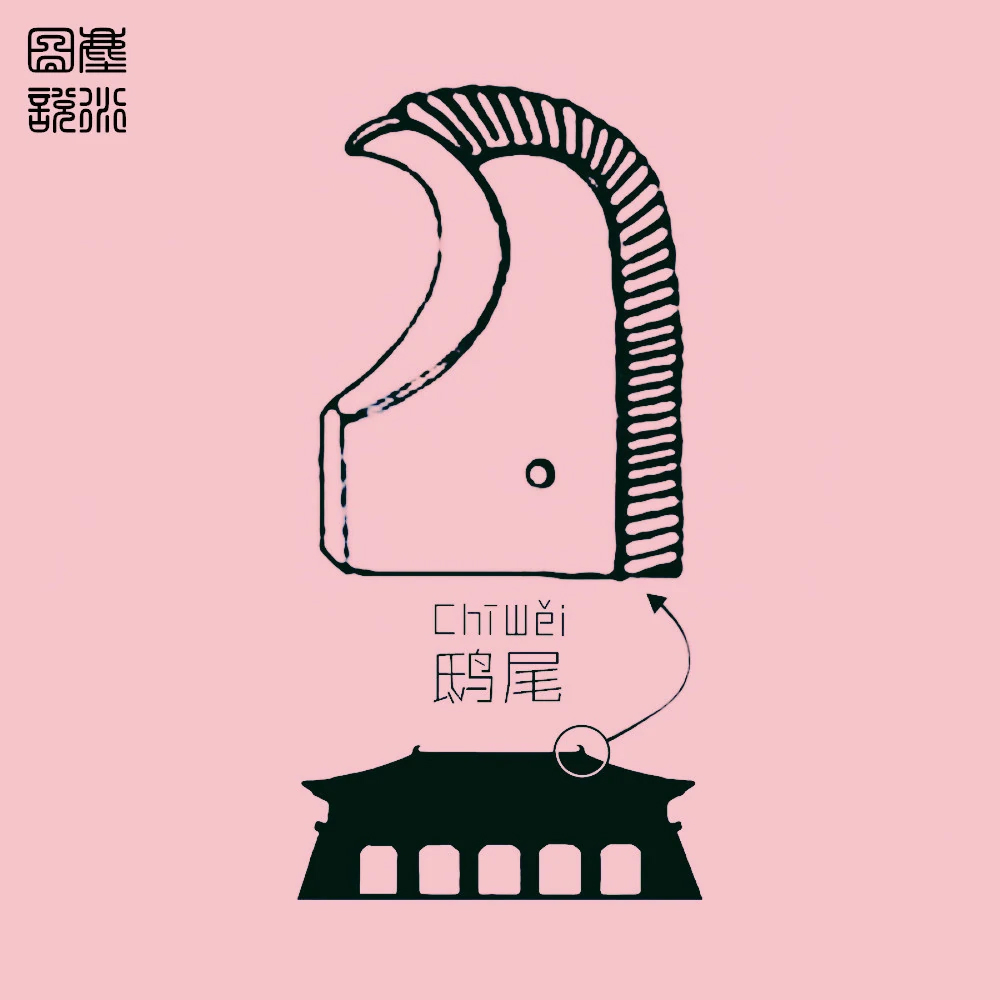
The hollow in the center uses 匠 (the literal translation of Artisan in Chinese) in the ancient Chinese character of seal script (https://en.wikipedia.org/wiki/Seal_script) as the prototype. To unify the edge texture of the seal style, it was hand-sketched using Bezier curves.
The English font in the lower part of the Logo is also in seal script.
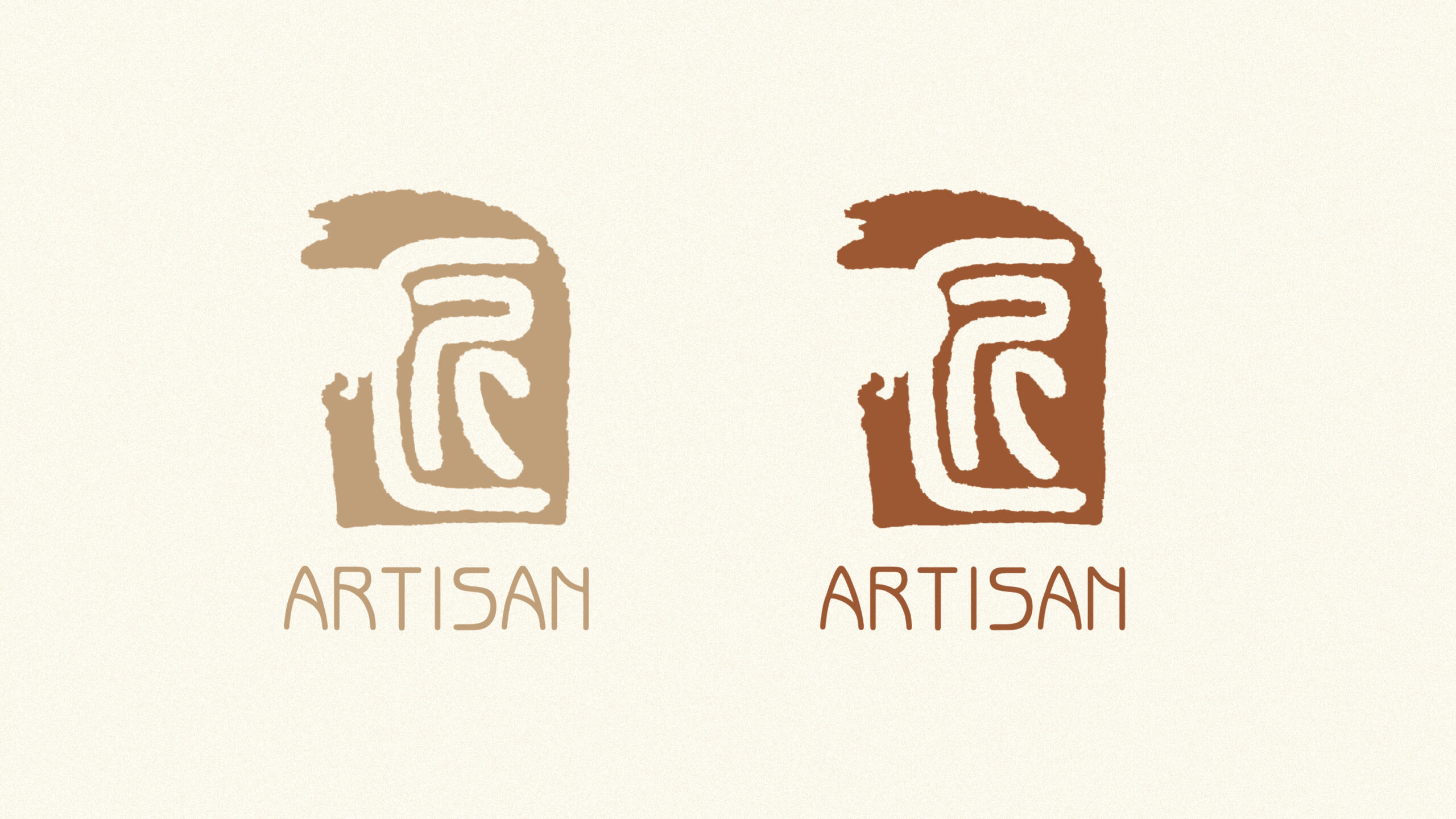
In addition, we also made a set of traditional Chinese color schemes for the Logo, which can then be adapted to different posters, presentation materials and promotional materials. (The seal characters below are just notes for color names.)
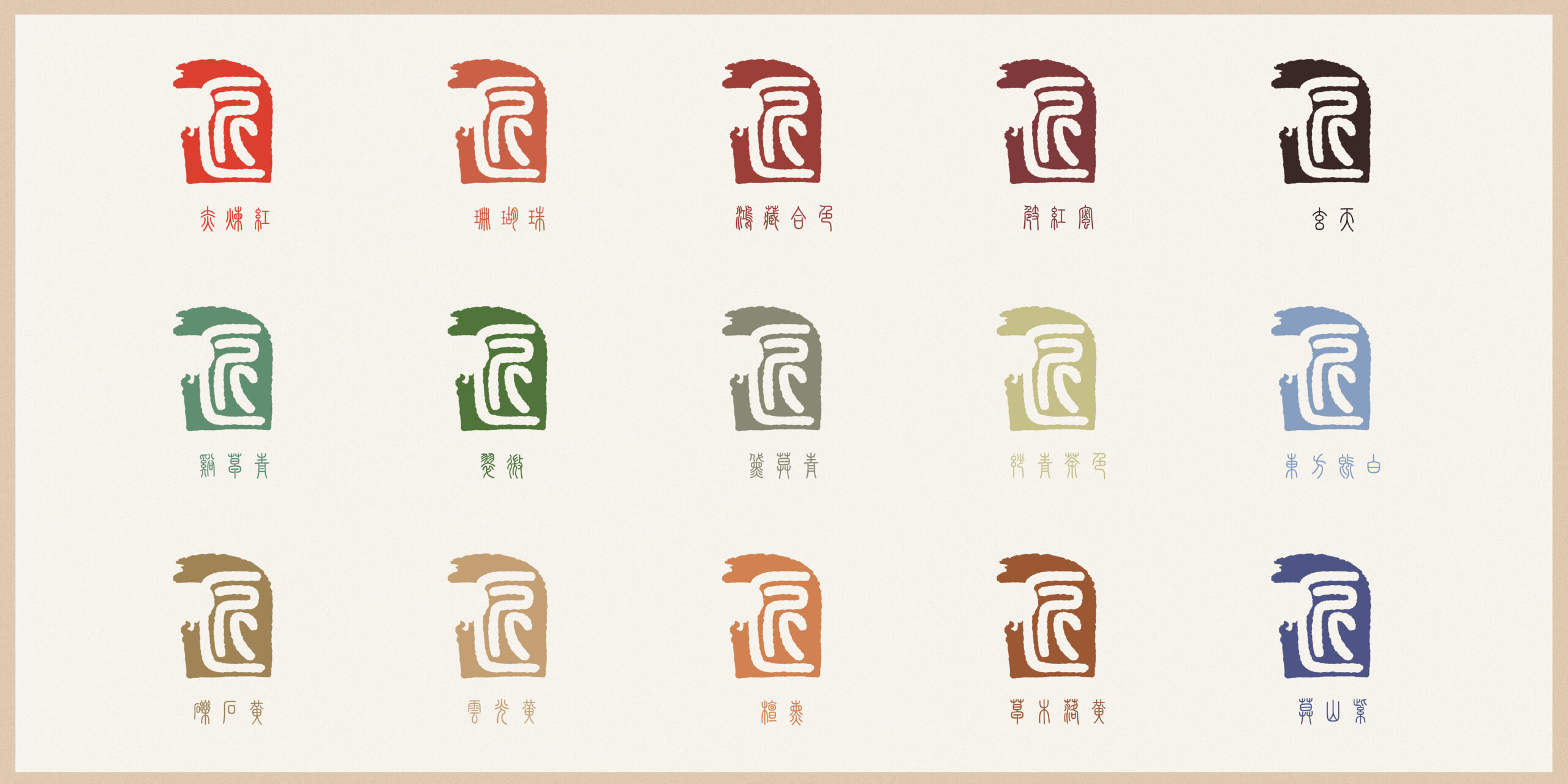
The second design used AI-assisted generation. We used AI to generate a base, iterated and optimized on top of it.
The design core is also using the Chinese character 匠 to make a variation, but in a more recent font. The overall sense of line is relatively strong, and also a symbol of a style of procedural generation.
